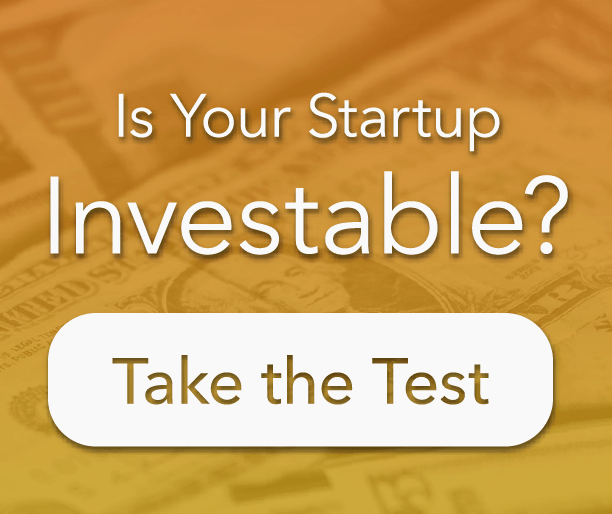
As a founder, you should ask yourself, “What is the final, desired outcome of my company?”
A baker imagines an exquisite wedding cake, triple-decked, with caramel lacing over white frosting, garnished with chocolate-dipped raspberries, that tells the story of the bride and groom, before even cracking the first egg.
All artists, including entrepreneurs, have the rare ability to envision, to imagine a product or solution as reality before it even exists.
In 2005, Don Cardon, an entrepreneurial real estate developer in Phoenix, Arizona, knew that downtown Phoenix was missing something. Beginning with handfuls of legal pads, he envisioned City Scape. This is the $1.2 billion triple skyscraper development to crown the unused raw land in the center of downtown Phoenix. Today, City Scape is one of the most notable 3P commercial developments in the nation. However, it never would have happened if one man did not begin with the end in mind.
Have A Business Idea? Here’s How To Turn It Into a Startup For Free
Every business is different, but all businesses should have a final point of “arrival.” While there are an endless number of product goals and visionary landmarks to strive for in the business world, startups have a more specific end goal: an exit strategy.
Divestopedia defines an exit strategy as a plan developed to monetize an owner’s investment in a business. Put another way, an exit strategy is the best possible outcome for everyone involved in the startup, including the founders, investors, advisory board, and even customers.
Two Types of Exit Strategies for Startups
After a startup reaches the penultimate Mezzanine Financing Stage of the funding lifecycle, where further funds are injected to scale sales, the stakeholders of the company begin the hunt for an exit strategy. At this point, the owners and any investors are looking to harvest their return on the substantial time and capital invested.
To do this, the startup team will need to carry the business through one of two exit strategies, often with the assistance of their advisors:
1. Merger or Acquisition (M&A)
Mergers and acquisitions are the lifeblood to the United States economy; it’s how large companies stay fresh and expand into new markets, while liberating entrepreneurs to start new ventures. Investopedia defines a merger as a combination of two companies to form a new company, while an acquisition is the purchase of one company by another in which no new company is formed.
If you take one thing away from this post, remember this:
John L. Nesheim, in his book, High Tech Start Up, wrote that the chances of your idea going public is 6:1,000,000. In other words, it is far more likely that your startup will undergo a merger or acquisition as an exit strategy than an IPO.
Put simply, for most of us, an M&A is the end goal for your startup (with exceptions, of course). For instance, Google has acquired over 180 companies as of April 16, 2015. Its largest acquisition was the purchase of Motorola Mobility, a mobile device manufacturing company, for $12.5 billion. Google is not the only company executing M&As to expand its business. Alibaba, Facebook, Comcast, and many other corporations made acquisitions last year totaling hundreds of billions of dollars.
In the past twelve months, roughly 1,000 M&A deals happened each month.
Here’s the point: as you build your startup, think about how you can best prepare for a merger or acquisition exit strategy. How can you make your company most appealing to a corporation (or private equity group) for a buy-out? Some of the most important factors involve:
- Clean financials
- A strong management team
- A proven customer base with realistic plans for growth
2. Initial Public Offering (IPO)
For those with unbridled aspirations, the IPO (Initial Public Offering) is the ultimate exit strategy of a startup. (If you’re from the UK, this is called a Flotation).
An IPO usually results from inadequate M&A offers, where the founders and other owners decide that their company has more potential with greater funding under their continued leadership, as opposed to outside management stepping in.
In 2014, there were a staggering 275 IPOs in the United States, and this trend is looking to continue into 2015, according to the IPO Center of Renaissance Capital.
Preparing for an IPO is an intensive and often daunting task for the C-level executives of the company, especially the Chief Financial Officer. However, take comfort in knowing that there are consultants and companies who have gone before you and know what to do (for a significant fee).
In the meantime, here are 4 steps to keep in mind in gearing up for an IPO:
- Train in exhaustive financial reporting
- Prepare for tax issues and SEC compliance
- Adopt more systems to narrow large risk gaps
- Boost stakeholder relationships to reassure
Summary
There are also other forms of exit strategies that are less favorable for founders and investors. These outcomes can involve dissolutions (disbanding and closing down), liquidations (selling assets for cash and closing down), and gifts (family and friend transfers or donations). While these outcomes may happen to you, do not be discouraged – they happen all the time. The key is to learn from the experience and try again.
Six Lessons I have Learned from Startup Failure
As you build your startup, form your team, and close your first sales, keep the end goal in mind: you are aiming for one of two exit strategies: an M&A or an IPO. Remember that an M&A is more likely, but an IPO is possible. Only time and performance will clarify which exit strategy is best for your company.









